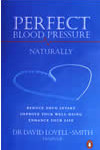Processed foods are not only the major source of salt in a person’s diet, they are also the source that we are least able to control.
The main health effect of too much sodium is high blood pressure, which is ’an acknowledged risk factor for ischaemic heart disease, stroke and renal disease which are major causes of morbidity and mortality. And while it seems that sodium is not carcinogenic in itself, high intake levels may increase susceptibility to carcinogens, leading to e.g. stomach cancer.
Children are also at risk from a diet high in salt, because of the life-long impact – studies indicate that if an increase in children’s blood pressure is due to excess intake of salt, the pressure levels can remain high later in life, even when salt intake is reduced.
It has been estimated that 70-75% of sodium in our diet are from processed foods, with naturally occurring sodium in unprocessed food an estimated 10-15% with the addition of salt during cooking or at the table adding an estimated 10-15%.
Your body requires a certain amount of sodium to live.
Its most important function is to balance the amount of water that exists within and outside our cells. Symptoms of sodium deficiency include heart palpitations, dehydration, low blood pressure and muscle cramps.
Some people mistakenly believe sodium chloride salt to be a natural product. However, sodium chloride is the result of natural salt crystal (which contains nearly 100 elements ) being washed and chemically treated, producing just two elements: sodium and chloride – referred to as table salt.
It is this combination of elements that causes problems. Sodium is beneficial to the human body, but only when combined with potassium, calcium, magnesium, and other elements. In other words, the closer it is to its original form the better the benefits. In addition, some people are sensitive to high concentrations of sodium.
So, how do you go about getting sufficient sodium?
If you opt for table salt (sodium chloride), It is a good idea to become aware of the amounts in the foods and drinks you consume. Many luncheon meats, snack foods, and carbonated beverages have high sodium content. The body requires about 500 milligrams of sodium. If you eat a variety of wholesome foods including vegetables you can easily reach this limit.
Many people consume much more sodium than their body needs. The human body is capable of handling up to 3000 milligrams of sodium. Excess salt is generally excreted through the urine. If the body receives too much sodium, it can become overwhelmed and you can become ill.
Related Topic:
Learn to Recognise the Sources of Sodium in Your Diet
A key to healthy eating is choosing foods lower in salt and sodium. In today’s fast passed life, with an increasing reliance on convenience foods in the home and on the run means that we can easily consume more salt than is needed by our bodies.
 Then you need to read this book, by New Zealand author, Dr. David Lovell-Smith.
Then you need to read this book, by New Zealand author, Dr. David Lovell-Smith.
In this book Dr. David Lovell-Smith describes how his patients successfully used diet, lifestyle changes and Transcendental Meditation to bring their blood pressure down.
This book offers new hope and insight for those with high blood pressure but it is not for hypertensives alone. The knowledge which Dr Lovell-Smith presents in his book is timely and relevant, and its exposition is long overdue.
Shop price is $34.95 Our price is $25.00 (including postage – NZ only)
